

| Visitors Now: | |
| Total Visits: | |
| Total Stories: |

| Story Views | |
| Now: | |
| Last Hour: | |
| Last 24 Hours: | |
| Total: | |
Unfounded Suspicions and Genuine Pitfalls of Playing Dungeons & Dragons
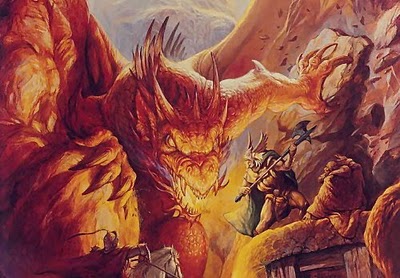 Controversy has surrounded the role-playing game Dungeons & Dragons since its creation over 30 years ago. Many Christians hotly contend that the game is a source of occult evil, enticing players to develop interest in Satanism and ultimately commit deplorable acts of murder and suicide, while many others believe role-playing games to be merely a harmless form of entertainment which offers an escape from ordinary life. After closer reflection on the matter, however, one will find that there may be some truth to both sides of the argument.
Controversy has surrounded the role-playing game Dungeons & Dragons since its creation over 30 years ago. Many Christians hotly contend that the game is a source of occult evil, enticing players to develop interest in Satanism and ultimately commit deplorable acts of murder and suicide, while many others believe role-playing games to be merely a harmless form of entertainment which offers an escape from ordinary life. After closer reflection on the matter, however, one will find that there may be some truth to both sides of the argument.
The role-playing game genre was developed in a time before mass entertainment through computers and videogames was commonplace, and it offered an innovative way to engage in the cooperative imagining of a fantasy realm in which players interact within an immersive story while engaging in physical and magical combat against formidable enemies through the use of dice and pen-and-paper calculations. The 3rd and 4th editions of the game produced in recent years still retain the essential concepts of the original Dungeons and Dragons (D&D) game and have restored the darker elements of D&D, dealing with evocation of demons and ritual sacrifice, which had been omitted from the 2nd edition after numerous protests from the public. The basic mechanics and themes of the game have remained unchanged throughout the years: players assume the role of a good, evil, or neutrally-aligned character from any class ranging from devout paladin knight to chaos-invoking warlock, and battle creatures chosen and controlled by the game’s storyteller, or ‘Dungeon Master’, throughout a series of encounters in an ever-expanding adventure campaign.
One prominent critic against D&D is William Schnoebelen, a Christian convert who claims to have been a ‘witch high priest’ of a satanic coven during the time when the concept of Dungeons & Dragons was being conceived. According to Schnoebelen, two of the game’s creators paid him a visit in order to study actual black rituals from a prominent real-life sorcerer and implement the concepts into the game to make it as ‘real as possible’. If this account of D&D’s origins is true, then there is reason to be cautious over delving too deeply into such a game. And even if this story of satanic origins is just a fabrication, concocted merely as fear-inducing propaganda to discourage fellow Christians from playing occult-themed games, the fact remains that the world of D&D does make constant reference to magic and rituals of both destructive and benefic natures. While an occult-themed game may provoke an interest in actual occult practices in some players, this is typically rare, as most players view magic as mere fantasy, and subsequently an occult-themed game carries relatively little risk in itself. Any real danger comes from the heart of the game genre: that of role-playing.
Imitative Magic
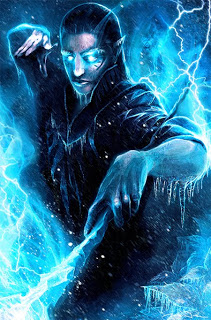 The practice of abandoning one’s everyday identity to take on the role of a hero, deity, or even diabolical creature, is an age-old practice, dating back to the oldest spiritual practices of shamanism. Whether it was a Native American healer assuming the movement and vocalizations of a totem animal to evoke its power and wisdom, or a Tibetan lama summoning all of his focus and will to temporarily merge his identity with an adored celestial deity, the practice of imitative magic is found throughout the world in every traditional culture: shedding one’s limited, everyday identity in order to receive knowledge or influence from the world unseen. Contemporary religions still retain certain elements of this practice, such as the role of a Christian priest to act as emissary of Christ to the congregation at Mass.
The practice of abandoning one’s everyday identity to take on the role of a hero, deity, or even diabolical creature, is an age-old practice, dating back to the oldest spiritual practices of shamanism. Whether it was a Native American healer assuming the movement and vocalizations of a totem animal to evoke its power and wisdom, or a Tibetan lama summoning all of his focus and will to temporarily merge his identity with an adored celestial deity, the practice of imitative magic is found throughout the world in every traditional culture: shedding one’s limited, everyday identity in order to receive knowledge or influence from the world unseen. Contemporary religions still retain certain elements of this practice, such as the role of a Christian priest to act as emissary of Christ to the congregation at Mass.
Traditionally, the practice of transcending individual identity was not only necessary for obtaining blessings and guidance from benevolent deities, but it was also a means of manifesting and binding evil. For instance, in ancient Rome during public games, so-called ‘wandering influences’ were allowed to manifest among the organized chaos so that they could periodically be released in a controlled setting and swiftly exorcised by the priests. In this way, malevolent forces were kept at bay and the people remained under ritual protection once daily life resumed.
Nowadays, with the deterioration of spiritual tradition, role-playing has taken on strictly secular forms, namely in psychotherapeutic settings or in mass entertainment through Hollywood actors. Although it may be stripped of its esoteric element, the act of role-playing still retains its power to profoundly change individuals.
When used correctly in therapy, role-playing allows patients to assume varying roles within a safe environment to overcome any number of emotional or social maladjustments. For example, a person with a social phobia may imagine him or herself onstage giving a public speech, or in a group setting family members may take on each others’ roles to gain clearer insight into their intentions and feelings. While role-playing in a clinical setting is not suitable for everyone, in many cases it has shown to be transformative for certain types of individuals when under the proper guidance of an understanding therapist.
The art of acting generally held an important role in a traditional society and often provided a means of transformation not only of the actors but of the audience as well, as characterized by the concept of catharsis in ancient Greek theatre. An actor who genuinely identifies with the character he is portraying becomes a medium of those thoughts and emotions which play a part in the story. While the story and characters may be nothing but a fiction, the actual emotions generated by experienced actors are very much real, as a psychic, emotional force is built up during the performance. Once those energies are released and resolved, the actor and audience experience a catharsis, and the undesirable tendencies are purged away, leaving a lasting effect on all who take part. It must be remarked that not all performances achieve such results, especially nowadays, as many actors are not trained to fully immerse their consciousness into their character, or if such genuine channeling of emotion is achieved, the result can be disastrous if not handled appropriately. Actor Richard Gere, a practicing Buddhist, once commented that the acting profession can in fact be dangerous, as actors are often required to embody unbalanced characters, resulting in an experience which can subsequently alter an actor’s consciousness and well-being after the work is finished.
Take for example, Eli Roth’s performance in Quentin Tarantino’s Inglourious Basterds, in which Roth (director of horror films in the emerging ‘torture porn’ genre such as Hostel) plays the role of the ‘Bear Jew’ who ruthlessly bashes in the skulls of Nazi soldiers with his baseball bat. In several interviews, Roth has expressed his personal feelings of vengeance poured into his ‘method acting’ performance, having grandparents who fled from Nazi persecution and distant relatives who were killed in the Holocaust. Here he describes the satisfaction he derived from partaking in onscreen vengeance and brutality, and how the enraged emotions he summoned up often took hold of him after shooting was finished:
‘It was an incredible honor and certainly an honor that I took very seriously… When I have to do that scene where I beat the guy’s head in, I was like, it was one thing I mean I lifted weights and put on almost 40 pounds of muscle…That’s one thing, but what’s going to make it work is the look in his face and the look in his eyes. This guy has to look possessed, he has to look tortured and tormented that all he thinks about is beating Nazis to death. So to do that you have to really dredge up, the most painful, think of your worst breakup, your worst fight, the most horrible death and like make it feel like it happened 15 minutes ago. So I was working myself up into this state, and after you film a scene like that even though the scene’s fake. And when everyone is like, ‘OK, it’s a wrap. Let’s go out for drinks,’ like you just want to crawl into a hole and die. Cause you’re like, you are gaaaawddd. And I talk to the actors, I was, it was exhausting and draining in a way I could’ve never anticipated. So even the climactic scene… I remember the day when I was going to do this scene where we’re wiping out the high command and everyone is like, “G-d, what's with Eli? Are you alright?” And I’m like I’m going to go. ‘Do you mind? Leave me alone. I'm trying to work myself up.’ And people would be like, ‘Stop, what’s up? Wait, wait. The guy's in a really bad mood. It’s like it’s Acting you guys, I'm allowed to act also….. Finally we got to the scene and I was like ready and I was just ready to explode. And I just unloaded on the guy, and it was it was great to finally beat him and just to get it out and do it over and over and over and over……[This experience] is certainly going to change the way I write scenes. I’d always in “Hostel” after I did an intense torture scene gave the actors a few days off to recover and rest and you know I’m glad I did that. I can see why you need that.’
Considering the psychic-emotional forces brought into play during dramatic performance, it is not surprising that many old theatres and movie studios carry stories of hauntings and paranormal phenomena, as the psychic forces unleashed during intense performances are apt to have an effect on the surroundings and individuals involved. And considering the increasing prominence of sadistic violence and disturbing emotional displays found in so many modern films, one is left to wonder about the effects such performances have on not only the actors, but the general audience as well, not to mention world events at large. Imitative magic can have effect even if those involved are not aware of its reality, and perhaps it is this unsuspecting mentality that is the most perilous, as chaotic forces are unleashed without intention or awareness, and therefore the means to control and expel such forces is lacking.
Make-Believe
![]()
It must be emphasized that not all forms of role-playing and acting are capable of having such effects on a psychic level; such power is only realized if those involved truly identify themselves with the person they are portraying, whether they are participating in a theatrical performance or in an actual magic ritual. In the case of Dungeons & Dragons, it is fair to expect that a majority of players take the game more or less lightly and only allow a partial suspension of belief in terms of their character and their fantasy world creation. In such cases, players are not in much risk, if any, and in many instances the role-playing experience offers them a chance of self-discovery and growth, in a similar manner to how some patients or actors discover unknown aspects of themselves while taking on characteristics of a role different from their everyday self.
But what of those players who truly immerse themselves in their role-playing experience and become entirely wrapped up in their fantasy world? Can it be said then that D&D presents a real risk of malefic influences? Perhaps it depends entirely on the participants’ disposition and motives while playing. If good-aligned characters work together to dispel evil, then any unintentional magic performed through the instrument of the game would in fact have a potential beneficial effect in the real world, no matter how small. However, in the case of a deeply-immersed player controlling an evil-aligned character who mercilessly slaughters innocents and evokes the aid of demonic entities in a search for power, such imitative magic may hold unseen risks for such a player, who exposes oneself to similarly attributed entities who might be drawn to such enactments. It would seem that those who refuse to acknowledge the existence of magic and spirits as reality are potentially more at risk, as these players are more likely to view the role-play content as merely a game and hold few reservations in their gameplay behavior, believing any action, whether good or evil, to carry no real consequences outside the game.
It is unlikely, however, that such occult phenomena frequently take place amidst D&D gameplay. After all, no matter its purported controversial beginnings, D&D was designed primarily as a fantasy game, not as a means of contacting wandering entities, as is the case with such ‘games’ as the Ouija board, which easily opens gateways to low-level entities, whether the board was mass-manufactured from plastic or homemade out of paper and a glass. The intention behind the initial creation of the Ouija board subsequently placed the same ‘charge’ in all corresponding forms and incarnations of the device. Unless the creators of Dungeons & Dragons intentionally imbued their game with these spiritualistic properties, for most players it remains simply a game, and not a gateway instrument for contacting spirits or practicing real magic. However, these possibilities do exist, and may be triggered by players with the capacity for unleashing such forces.
Fragmented Mythology
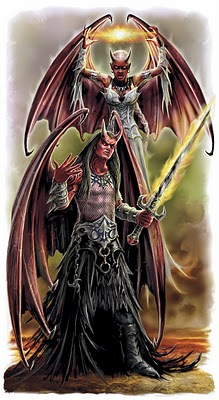 There may be other, indirect risks due to the occult themes presented in the Dungeons & Dragons universe, namely that of the religious concepts and mythology depicted in D&D lore. The invented lore of D&D borrows heavily from various spiritual traditions, describing the realms of the Astral Sea inspired by Eastern religions, and the realms of Primordial Chaos, which reflect the ancient Greek concepts of Hades and Tartarus. Situated between these two realms of the gods and the demons lies the physical world, in which the battle of good and evil takes place.
There may be other, indirect risks due to the occult themes presented in the Dungeons & Dragons universe, namely that of the religious concepts and mythology depicted in D&D lore. The invented lore of D&D borrows heavily from various spiritual traditions, describing the realms of the Astral Sea inspired by Eastern religions, and the realms of Primordial Chaos, which reflect the ancient Greek concepts of Hades and Tartarus. Situated between these two realms of the gods and the demons lies the physical world, in which the battle of good and evil takes place.
While seeming to portray a more or less traditional view of the spirit realms, one crucial element is omitted from the D&D universe: that of a transcendent, unmanifest Source of creation which remains beyond the duality between good and evil. Whether it is depicted as Brahma in Hinduism, the Void in Buddhism, the First Reality in Pythagorean esoterism, or God the Father in the Judeo-Christian tradition, many spiritual faiths describe a transcendent Source which acts as the ground of all Being – a concept notably lacking in D&D mythology. Instead, players are presented with an ideology bearing similarities to Manichaeism, in which evil is depicted as being equally powerful to good (rather than being merely the privation of good, an entropic force which aims for separation from the Source), and the entire existence of the cosmos rests on the balance between these two opposing forces in an endless struggle, both of which are necessary for creation to take place. A simple exclusion of the eternal Creator, central to many spiritual traditions, reduces the mythology to a ‘cosmological’ level and eliminates any reference to a transcendent Principle. As a result, the world is presented as a morally relative universe, in which evil characters are justified in their actions, and the powers of good are restricted within certain limits, never granted full omnipotent potential.
While such criticism against a mere game’s shallow representations of spiritual myths may seem unmerited, any fictional mythology must be understood within a modern context, that is, a culture in which no spiritual myths are given due reverence or understanding. Myths are powerful devices, and even when taken as part of a simple gaming world, they can still imprint their core themes and moral messages to those who take an interest. It is for this reason that a skewed attempt at replicating genuine myths taken from spiritual traditions can inadvertently plant misleading, distorted beliefs in those who listen.
Accusations of Violence and Satanism
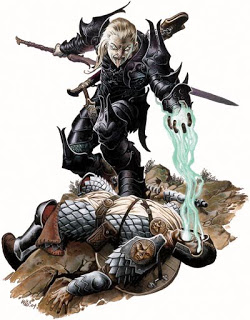 Many advocates against Dungeons & Dragons often cite cases of murder and suicide committed by people who had been involved in the game, placing blame solely on their role-playing activities and denouncing the game as an occult practice. While it may be extreme to place all blame on a game, ignoring all other factors in the forces which shape an individual’s decisions, it is worth taking account of the fact that many crimes committed were inspired by occult dabbling, initially inspired by themes presented in D&D.
Many advocates against Dungeons & Dragons often cite cases of murder and suicide committed by people who had been involved in the game, placing blame solely on their role-playing activities and denouncing the game as an occult practice. While it may be extreme to place all blame on a game, ignoring all other factors in the forces which shape an individual’s decisions, it is worth taking account of the fact that many crimes committed were inspired by occult dabbling, initially inspired by themes presented in D&D.
A prominent case is that of Sean Sellers, convicted and executed for the murder of his parents and a convenience store clerk in 1987. A testament written by Sellers states that playing D&D initially inspired his interest in the occult, and he eventually became a practicing Satanist. In his own words:
‘With the controversy over role-playing games so prevalent today many well meaning people have sought to use my past as a reference for rebuking role-playing. While it is true that D&D contributed to my interest and knowledge of occultism I must be fair and explain to what extent D&D
contributed.When I was playing D&D I was not a Satanist, and in fact would probably have punched any Satanist I met right in the mouth. I was interested in witchcraft and Zen however. In doing some research at the library for a D&D adventure, I was leading, I happened upon other books that led to my study of occultism.
After I became a Satanist, I used D&D manuals for their magical symbols and character references for my initial studies. I also used my experience as a Dungeonmaster to introduce people to satanic behavior concepts and recruit them into the occult.
I do have objections to some of the material TSR released for their role playing games. I think their excessive use of paganism and occultism is unnecessary and can lead to idealistic problems among some players; however, to be fair to TSR and in the spirit of honesty, I must concede that D&D contributed to my involvement in Satanism like an interest in electronics can contributed [sic] to building a bomb. Like the decision to build the bomb, I had already made decisions of a destructive nature before I incorporated D&D material into my coven projects, and it was Satanism not D&D that had a decisive role in my crimes.
Personally, for reasons I publish myself, I don't think kids need to be playing D&D, but using my past as a common example of the effects of the game is either irrational or fanatical.
February 5th 1990
Sean Sellers’
It is important to note Seller’s insistence that D&D only had an indirect effect on the path his life took, that Satanism was first and foremost the motivation for his committing murder, and playing D&D was simply an instigative factor. Similarly, many criticize movies and videogames for being the sole causes of teenage violence, without acknowledging the many instances in which engaging in violent entertainment does not lead to acts of aggressive; rather, only certain types of individuals acquire a sort of inspiration from such media. In the same manner, the occult themes in Dungeons & Dragons present no inherent risk of social deviation, but players with a twisted disposition may find that immersion in the game will lead themselves into darker places. While the occult is not equivalent to Satanism per se (as occultism in itself is a varied range of practices, either good or bad), the two practices are often co-mingled, especially given the modern stereotype of associating dark magic with any practice that involves dealings with the spirit world. For this reason, players whose imagination is sparked by the occult themes in the game may quickly gravitate toward the darker elements of magic and other-worldly beings.
For better or worse, perhaps the main appeal of Dungeons & Dragons (as well as other fantasy genre games, books, and movies) is the sense of wonder that a world of magic evokes in both youths and adults, having been raised in the materialistic, scientifically-minded society of the modern world. Not only does the fantasy realm offer escape from the mundane, more importantly, it offers an enlivening vision of a magical world, a perspective which has been omitted from daily life, shunned by modern preconceptions. Perhaps so many people are drawn to stories of magic and fantastical creatures and abilities because these stories reflect a long-forgotten truth: that there do exist other realms, whose events effect the physical domain in which we reside. What was once held to be common knowledge is now reduced to mere fiction and shunned by any commonly-accepted reasoning. But the unseen worlds remain, and their reminders push into other forms acceptable to modern society, manifesting in forms of entertainment, whether the latest fantasy blockbuster or work of creative fiction, often leaving even the creators of such works bewildered at the sudden inspiration for realizing such imaginative creations.
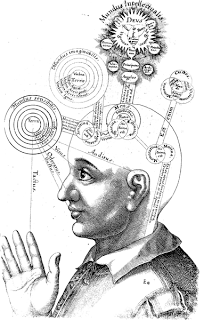 Involvement with magic and spirits is a powerful concept, and when showcased in a seemingly harmless game, there may be unintended consequences if such forces are inadvertently released by players. In esoteric practices, the imagination is understood differently from the modern approach, and is considered an essential element of the mind when communicating with the spirit world and manifesting physical results. An entity can be summoned first by single-pointedly fixing its image in the mind, which acts as a beacon to attract its presence. If players of D&D are encouraged to imagine themselves in the game as deeply as possible (as encouraged by the official Dungeon Masters’ Guide) and engage in magical rituals and encounters with monstrous beings, then it may be possible that players with sufficient suspension of belief and focused imagination will unintentionally provoke actual contact with similar entities. This paired with the allure of dark occult practices presents a real danger to certain players. But it must be emphasized that only a rare minority of people encompass such a disposition when playing role-playing games, for most others, D&D and other similar RPGs carry little risk of danger. Provided those who engage in role-playing do so lightly and take the necessary precautions of remaining mindful of the inherent potential of releasing the very magical forces that the game encompasses, then D&D remains only a game — a game in which players are free to explore mystical ideas that are unpopular in the modern worldview, and players may discover facets of their strengths and potential that were previously hidden and left unexplored.
Involvement with magic and spirits is a powerful concept, and when showcased in a seemingly harmless game, there may be unintended consequences if such forces are inadvertently released by players. In esoteric practices, the imagination is understood differently from the modern approach, and is considered an essential element of the mind when communicating with the spirit world and manifesting physical results. An entity can be summoned first by single-pointedly fixing its image in the mind, which acts as a beacon to attract its presence. If players of D&D are encouraged to imagine themselves in the game as deeply as possible (as encouraged by the official Dungeon Masters’ Guide) and engage in magical rituals and encounters with monstrous beings, then it may be possible that players with sufficient suspension of belief and focused imagination will unintentionally provoke actual contact with similar entities. This paired with the allure of dark occult practices presents a real danger to certain players. But it must be emphasized that only a rare minority of people encompass such a disposition when playing role-playing games, for most others, D&D and other similar RPGs carry little risk of danger. Provided those who engage in role-playing do so lightly and take the necessary precautions of remaining mindful of the inherent potential of releasing the very magical forces that the game encompasses, then D&D remains only a game — a game in which players are free to explore mystical ideas that are unpopular in the modern worldview, and players may discover facets of their strengths and potential that were previously hidden and left unexplored.
From: Mind Unclouded


